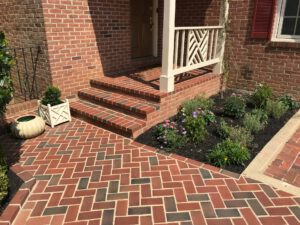What Is Masonry?
Pro Angle Masonry Charleston is the construction of structures from individual units, often laid in mortar. It is a durable and noncombustible material, and it is easily and cheaply manufactured. It is also one of the strongest construction materials available. Its main advantage over other building materials is that it is non-combustible, so it’s a better choice for homes.
Fire resistance is a key issue in the built environment. Noncombustible materials can help protect vulnerable occupants and give them extra time to escape. Building materials are rated by their reaction and resistance to fire. This can help specifiers decide whether a material is suitable for use in a particular building and when further protection is required. Noncombustible materials are classified into seven grades, depending on their fire resistance rating.
Despite its noncombustibility, masonry can be a fire hazard. A fire in a masonry building can result in serious injury or death. The structure of the building’s walls and the roof is important for fire safety, and fire-resistant materials will reduce the risk of damage and loss of life. Noncombustible walls can reduce the risk of collapse by trapping water and containing the flames. In addition, fire-resistant concrete materials can help prevent fire-related damage.
Another noncombustible material is brick. Using brick masonry veneer on top of a noncombustible layer of a building’s walls will protect combustible layers from fire. It can also help prevent fire spread. Whether you’re an architect, contractor, or engineer, building fire safety into a structure can mean the difference between life and death.
Because stone is a noncombustible and durable material, it’s a good choice for buildings with high traffic. It resists rot, pests, and natural disasters. Aside from being durable, stone masonry also requires little maintenance.
Buildings made of combustible materials contain wood or steel studs on their internal walls. These structures are insulated with foam or plastic to prevent excessive heat buildup. Firefighters must ventilate these buildings to prevent dangerous temperature rises. Buildings constructed of noncombustible materials are classified as Type III. While they are generally made of non-combustible materials, they may contain some combustible elements, such as a wood interior structural system. Those buildings may also have lightweight roof systems.
Noncombustible materials like brick masonry and concrete blocks are non-combustible. While wood is easy to build and is economical, it can burn. The difference between noncombustible and combustible materials is the fire resistance and the rebuilding rate.
To make masonry, start with a basic mix. Sand, cement, and water are added to form a consistency that’s similar to concrete. The mix should be level and free of lumps. It’s important to wear protective equipment, such as gloves and long sleeves when mixing mortar. It’s also helpful to wear a respirator mask. Mix mortar outdoors, preferably in a protected area where the wind is blowing away. Next, sift the sand through a 1/4-inch wire screen. This will remove any large stones or chunks from the mix.
Bricks are the most popular type of masonry material because they look great and last for many years. They can be used to build chimneys, walls, and more. Plus, they’re cheaper than most other masonry materials. Brick walls are also thinner than concrete or stone walls. Unlike concrete and stone, bricks are also fairly uniform in size, which makes them easier to handle.
There have been a few attempts to mechanize the masonry process. However, none of these attempts have achieved commercial success. The Hadrian system is one of the few attempts. A hollow boom mounted on a truck carries masonry blocks. The boom is sprayed with an industrial adhesive, and then a robot arm picks up the brick and places it in the correct position. This method does not require a human worker, which makes masonry a less labor-intensive construction process.
Mechanization of the masonry process has many benefits. Thousands of identical bricks or blocks can be placed with fewer labor hours. It also reduces the strain on the mason’s body. Also, it eliminates the need to manually move the pallets around. The process is also standardized, so the entire process is more convenient and faster.
Although mortar glue makes masonry projects easier, property owners should be aware of its limitations. If it’s used in an application where mortar would be better suited, it can cause problems. Nevertheless, using it wisely can result in a beautiful masonry project.
